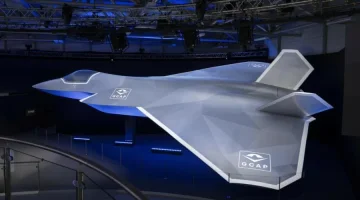- Views: 1K
- Replies: 10

India's ambitious journey towards self-reliance in defence technology is gaining momentum. The nation's defence establishment has set its sights on developing an indigenous Electromagnetic Aircraft Launch System (EMALS) for its planned IAC-III aircraft carrier.
If successful, India would join an exclusive club with the United States and China as the only nations possessing this cutting-edge technology.
Collaborative Development and Funding Push
The Indian Defence Minister's recent inspection of a scale model EMALS system, testifies to the progress made through a collaborative effort involving state-owned Bharat Electronics Limited (BEL), private industries, and academic institutions.To bring this system to fruition on the 65,000-ton IAC-III carrier, both BEL and the Indian Navy are actively pursuing funding avenues.
Cost-Consciousness Drives Innovation
A significant factor propelling this indigenous development is cost control.Although the United States has offered customized EMALS and Advanced Arresting Gear (AAG) systems for the IAC-III, the associated price tag exceeding $1 billion, along with India-specific development expenses, presents a considerable financial hurdle.
Strategic Planning for Self-Sufficiency
To address this challenge, the Indian Navy envisions conducting feasibility studies with partners to construct a functional full-scale model of the EMALS and AAG system.Gaining approval from the Ministry of Defence (MoD) is crucial as it would secure the necessary funding for this crucial stage of development.
Implications for India's Naval Prowess
The potential rewards of this project are significant. An indigenous EMALS system would dramatically augment the IAC-III carrier's capabilities, enabling the launch of heavier and faster aircraft.Beyond that, it would exemplify India's growing self-reliance in critical defence technologies, lessening reliance on foreign suppliers.
Challenges and the Road Ahead
However, the path to achieving this goal isn't without obstacles. Creating such technologically advanced systems necessitates considerable technical expertise, financial resources, and time.The project's triumph rests on navigating these challenges while securing essential approvals and funding.
Conclusion
India's pursuit of an indigenous EMALS is a testament to its determination to become a leading player in defence technology.The success of this venture stands to greatly enhance the Indian Navy's capabilities and bolster the nation's strategic autonomy.



